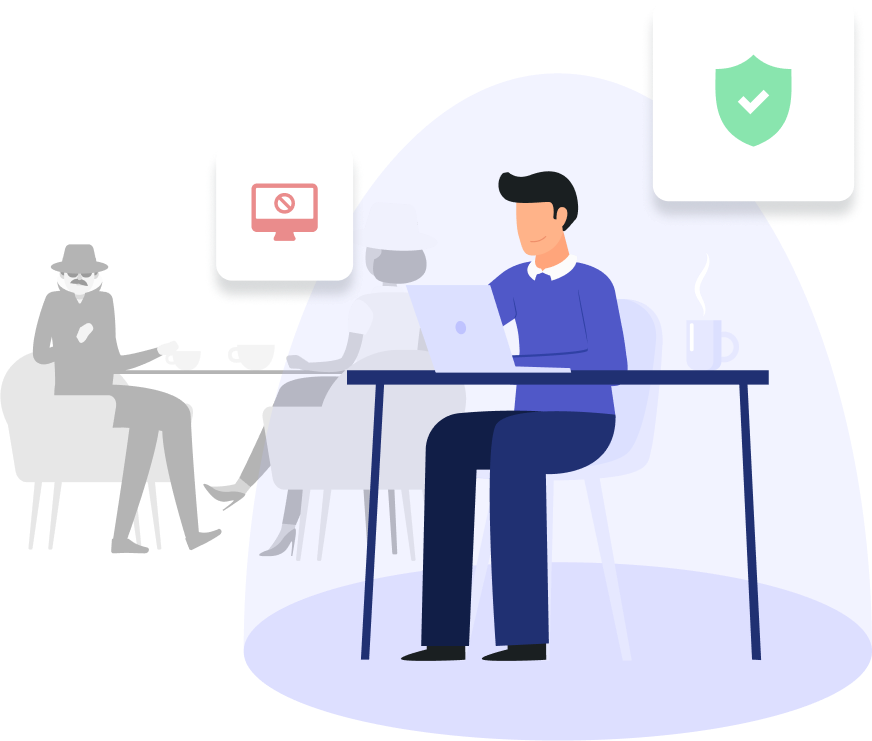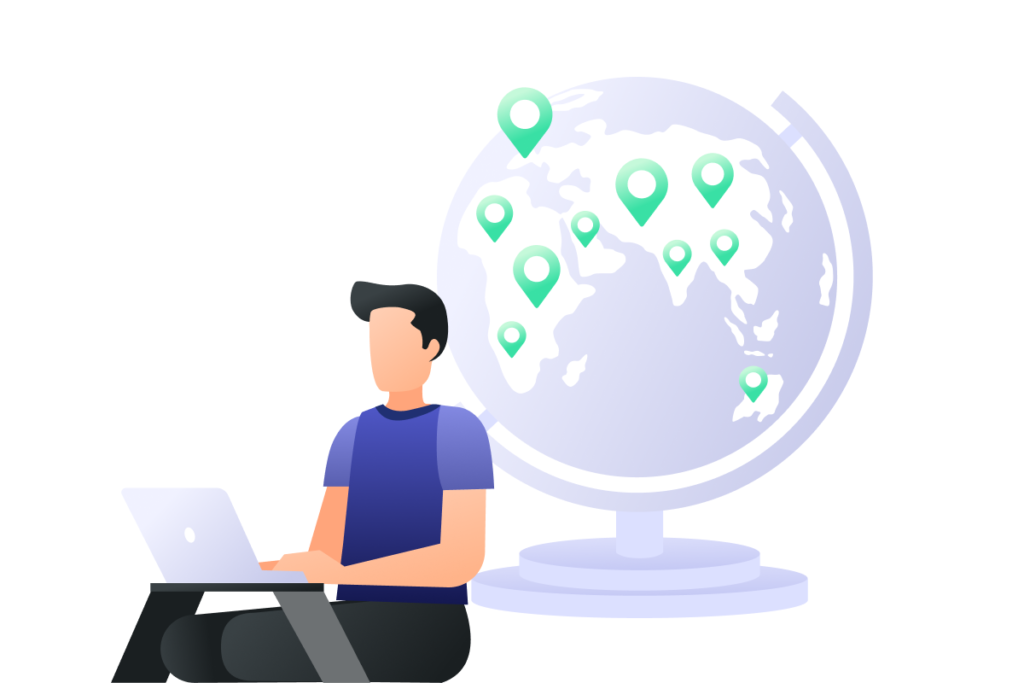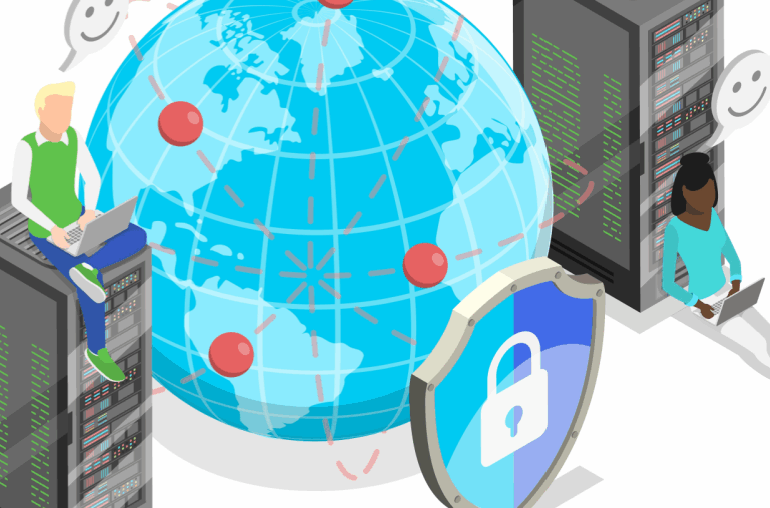For older generations, it’s easy to remember a time when the Internet was only a repository for knowledge and communication. Since the early days of the World Wide Web, much of the digital landscape has grown into something completely different. However, one facet of the Internet is still the same: what you post online is tied to you forever. This is what’s known as your “digital footprint,” and it can easily be used by cybercriminals for malicious purposes. Understanding your digital footprint is the first step in protecting yourself and increasing your online privacy.
What is a Digital Footprint?
When you share something on social media, like a photo or a video, you create something called a “data trail.” This data trail consists of information that becomes associated with you, your online accounts, your devices, and more. Even after deleting certain data, like a video, the place where you upload it still has records of your activity. When it comes to understanding your digital footprint, it’s important to know that a vulnerable data trail can be dangerous.
Think about videos or images that have gone viral: the blue-or-gold dress, or the Internet sensation known as Keyboard Cat. These photos and videos are easily accessible to anyone online and still remain popular to this day. Although those pieces of content are “old” (wow, was the dress incident really that long ago?), their digital footprint remains. Think about this the next time you share something on social media: how long will this exist on the Internet? The answer is, unfortunately, “forever.”

The Privacy Risks of a Digital Footprint
Now that you understand your digital footprint, you can see how cybercriminals might use the information you post against you. For example, if you share an image of your workplace on your first day, cybercriminals will know where you work. Likewise, if you search “best dog food,” advertisers will know you’re a pet owner and target specific ads towards you. There are many ways that your digital footprint can be used without your knowledge or permission. This is why it’s so important to carefully manage your presence online.
When it comes to classification, there are two distinct categories for digital footprints: active, and passive. An active digital footprint includes data you share purposefully, like photos or social media posts. Passive digital footprints reflect the information you share unknowingly, like your IP address or location. But why is this a threat to your security?
Many websites track your information without your knowledge, and this data is sold to advertisers so they can target you. Additionally, cybercriminals can easily access the data that you share, or leave behind, to target you for different reasons. These risks to your privacy can result in serious threats like fraud and identity theft. Ultimately, the biggest lesson is this: don’t share personal information on the Internet that can link back to you.

How Can I Protect My Digital Footprint?
Protecting your Internet presence can be a challenge, especially in an age where all of our private moments are online. From proposal videos on Instagram to work information on LinkedIn, your data is everywhere. However, there’s still hope: protecting your digital footprint is as easy as following these simple steps.
- Look up your name on search engines to track what information is available.
- Adjust your privacy settings on social media websites.
- Delete old accounts and profiles you no longer use.
- Remove tags of yourself in photos and videos.
Of course, your digital footprint isn’t the only thing that can cause cybercriminals to target you. No matter what you share or where you share it, malicious hackers can find your information if you aren’t careful. However, increasing your online privacy is easier than you think. With just a few adjustments, you can effectively protect yourself from cybercriminals and other prying eyes.

Tips for Increasing Online Privacy
Although it may seem obvious, there are many ways to increase your online privacy. With only a few minor updates to your Internet profiles and posting practices, you can improve your online security. Managing your publicly-accessible information is more important than ever. Take a look at these suggestions below for improving the privacy of your digital footprint.
- Use two-factor authentication for all your accounts.
- Never share location information (e.g. city, state, workplace, school, etc.).
- Update your software regularly.
- Create stronger passwords.
- Delete unused apps and accounts.
- Never give away your full name online.
- Use a powerful VPN.
With these tips in mind, you can easily protect yourself, and your activity, from prying eyes and attackers. You never know who may be using your personal information, so it’s important to keep it safe. With more cases of identity theft and fraud occurring every day, it’s time for you to start boosting the strength of your online privacy.

Get World-Class Privacy and Protection from PrivadoVPN
Now that you understand your digital footprint and how it affects you, it’s time to increase your online privacy. PrivadoVPN makes it easy for you to control your data and manage how your personal information is shared online. Using a VPN allows you to mask your IP address from dangerous attackers that take advantage of your vulnerable network. PrivadoVPN stops these criminals in their tracks with our powerful encryption protocols. Plus, premium members even get access to 300+ global servers, unlimited monthly VPN data, and up to 10 simultaneous connections. PrivadoVPN helps you get the most out of your online experience by ensuring that your information is truly secure. Sign up today and see the difference for yourself!

Download PrivadoVPN
Protect your privacy with a world-class VPN. Sign up for premium access to PrivadoVPN and get unlimited monthly data, access to 300+ servers from around the world, and up to 10 simultaneous connections. Get a top-rated VPN that can secure your privacy at home, at work, or on the go. Sign up for PrivadoVPN today!




